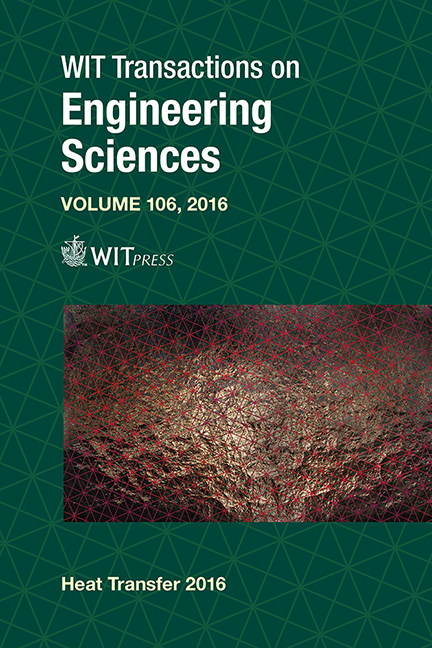Heat Transfer Analysis In Wire Bundles For Aerospace Vehicles
Price
Free (open access)
Transaction
Volume
106
Pages
11
Page Range
53 - 63
Published
2016
Size
819 kb
Paper DOI
10.2495/HT160061
Copyright
© 2016 US Government
Author(s)
S. L. Rickman, C. J. Iannello
Abstract
Design of wiring for aerospace vehicles relies on an understanding of “ampacity” which refers to the current carrying capacity of wires, either, individually or in wire bundles. Designers rely on standards to derate allowable current flow to prevent exceedance of wire temperature limits due to resistive heat dissipation within the wires or wire bundles. These standards often add considerable margins and are based on empirical data. Commercial providers are taking an aggressive approach to wire sizing which challenges the conventional wisdom of the established standards. Thermal modelling of wire bundles may offer significant mass reduction in a system if the technique can be generalized to produce reliable temperature predictions for arbitrary bundle configurations. Thermal analysis has been applied to the problem of wire bundles wherein any or all of the wires within the bundle may carry current. Wire bundles present analytical challenges because the heat transfer path from conductors internal to the bundle is tortuous, relying on internal radiation and thermal interface conductance to move the heat from within the bundle to the external jacket where it can be carried away by convective and radiative heat transfer. The problem is further complicated by the dependence of wire electrical resistivity on temperature. Reduced heat transfers out of the bundle leads to higher conductor temperatures and, hence, increased resistive heat dissipation. Development of a generalized wire bundle thermal model is presented and compared with test data. The steady state heat balance for a single wire is derived and extended to the bundle configuration. The generalized model includes the effects of temperature varying resistance, internal radiation and thermal interface conductance, external radiation and temperature varying convective relief from the free surface. The sensitivity of the response to uncertainties in key model parameters is explored using Monte Carlo analysis.
Keywords
ampacity, cable harness, AS50881, wire bundle, thermal analysis





